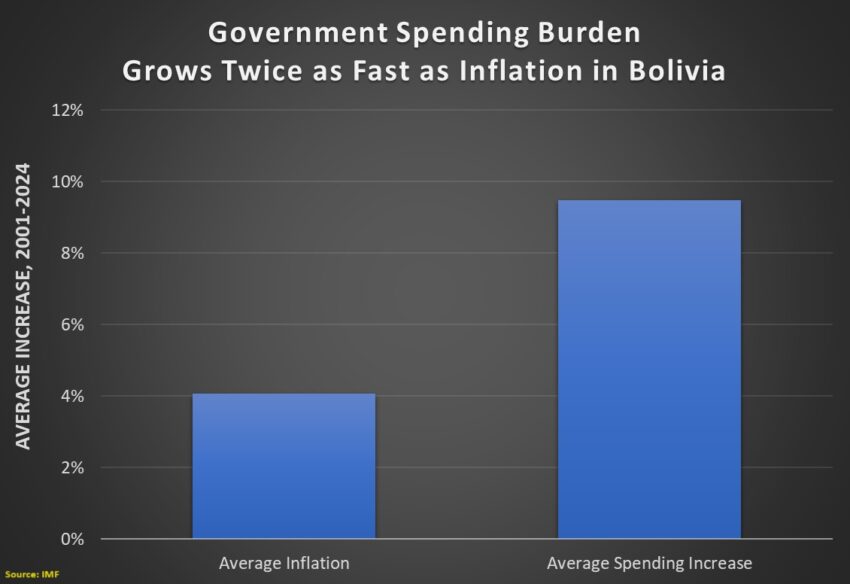Last July, I wrote about how excessive spending was causing economic instability in Bolivia.
One month later, I looked at overall public policy and explained that a bloated budget was just one of many problems.
Simply stated, Bolivia suffers from too much statism.
Not just wasteful spending, but other bad policies such as excessive taxation, burdensome red tape, and onerous protectionism.
That’s the bad news.
The good news is that voters may be finally waking up and realizing – as Reagan wisely told us – that government is the problem.
Here are some excerpts from a Washington Post report by Samantha Schmidt and Gabriel Díez Lacunza, beginning with an assessment of Bolivia’s faltering economy.
…politics in Bolivia has been dominated by one man. Evo Morales, acolyte of Fidel Castro and Hugo Chávez… But the movement he built now verges on collapse. The economy, now in the hands of a former protégé, is struggling through its worst crisis in decades: Inflation has reached double digits; the central bank nearly ran out of dollars. An energy shortage has left Bolivians spending hours waiting in line at gas stations… When Morales took office in 2006, Bolivia was the poorest country in South America. Over the next 14 years, his socialist policies helped push an estimated 3 million people into the middle class. …But Morales, like socialist comrades Chávez in Venezuela and Rafael Correa in Ecuador, depended on a global commodities boom to fund government spending. Thanks to the high price of natural gas, nationalized by Morales, foreign exchange earnings reached near $70 billion, according to economist Gary Antonio Rodríguez Álvarez. “It was a fantasy of money for such a small economy,” said Raul Peñaranda, a political analyst. “Now, none of that is left.” …Nationalization chased foreign investors away, reducing production. Less than a decade after supplying 50 percent of its own diesel fuel, Arce said, by 2023 Bolivia produced only 12 percent. Soon, the central bank was running out of dollars. Inflation, which until 2023 was controlled at 2 percent, was more than 16 percent in July.
I can’t resist commenting on one of the above sentences.
The article notes that Bolivia was the poorest country in South America about 20 years ago and then praises Morales for making things better.
The average reader might therefore assume the country’s status has improved, but IMF data clearly shows that it not true.
I also doubt that the claims that 3 million people were lifted out of poverty. Or, if they were, they’ve probably fallen back into destitution because of the current crisis.
The moral of the story is that socialism inevitably fails. Margaret Thatcher was right about how they always run out of other people’s money.
Any improvement, as we saw in Venezuela, is illusory and short lived.
Now we finally get to the good part of the report. It seems like the days of socialism may be coming to a halt.
The presidential election on Sunday could mean the end of a socialist era. Two right-leaning candidates are leading in the polls. …The end of Bolivia’s socialist experiment would be another win in a recent streak for Latin America’s resurgent right.After victories by Javier Milei in Argentina and Daniel Noboa in Ecuador, right-leaning challengers are trying to capitalize on frustration with leftist leaders in Chile and Colombia.
I’ll close with the should-be-obvious observation that candidates from Latin America’s “resurgent right” are not created equal.
Bolivia needs a Javier Milei, as does almost every country.
———
Image credit: Pedro Szekely | CC BY-NC-SA 2.0.
Click this link for the original source of this article.
Author: Dan Mitchell
This content is courtesy of, and owned and copyrighted by, https://freedomandprosperity.org and its author. This content is made available by use of the public RSS feed offered by the host site and is used for educational purposes only. If you are the author or represent the host site and would like this content removed now and in the future, please contact USSANews.com using the email address in the Contact page found in the website menu.







